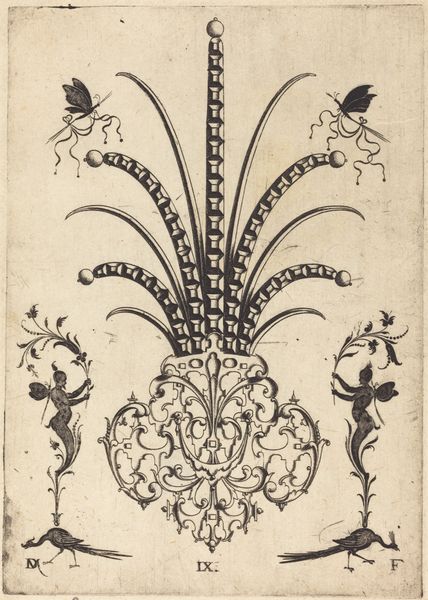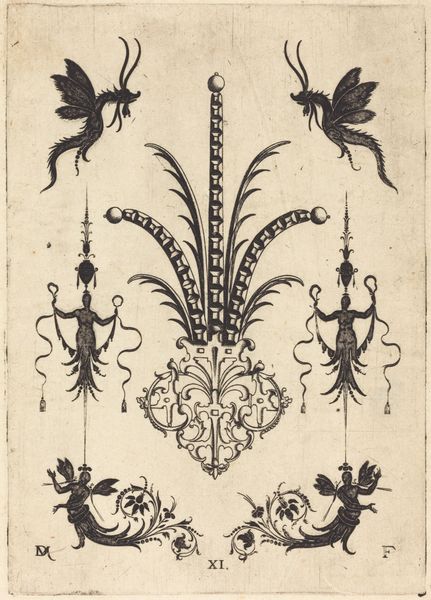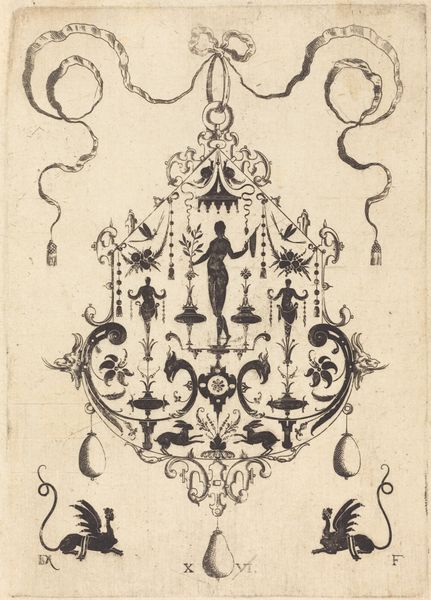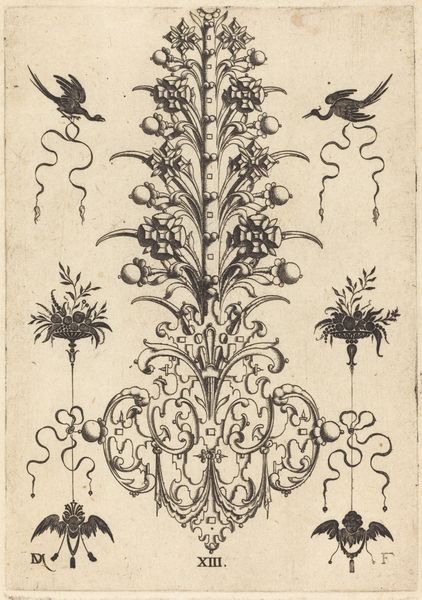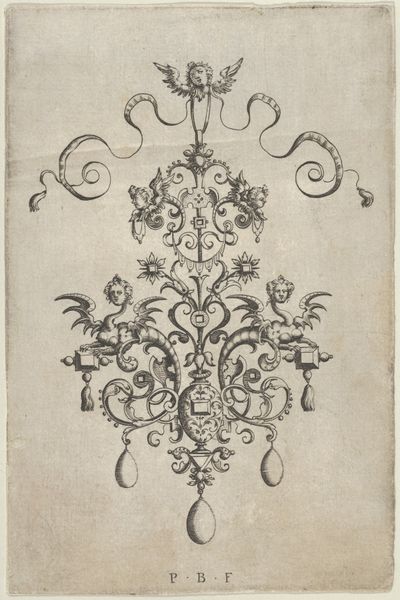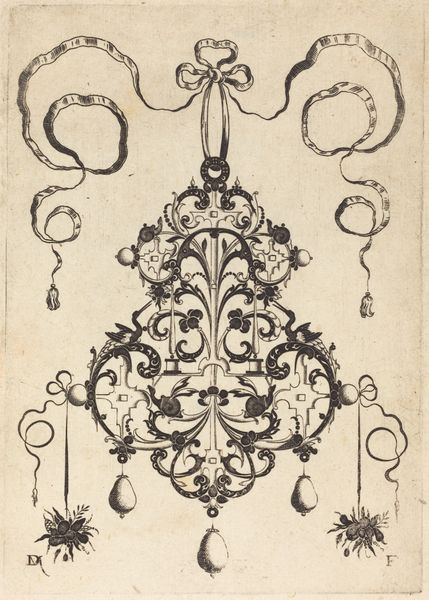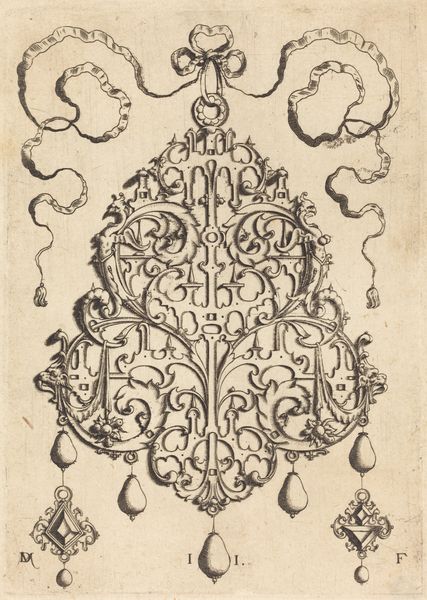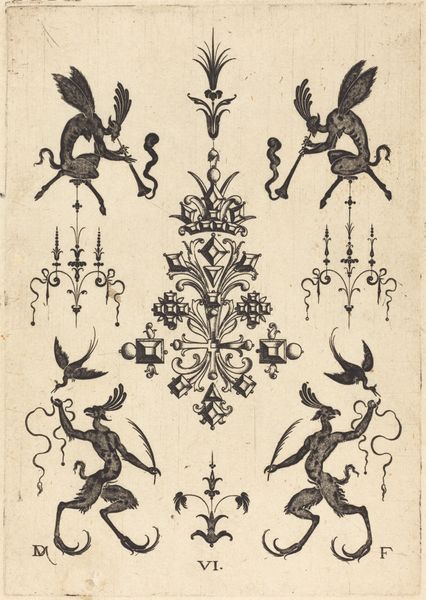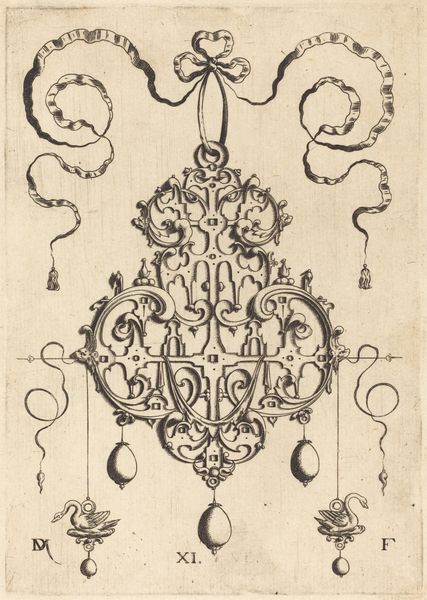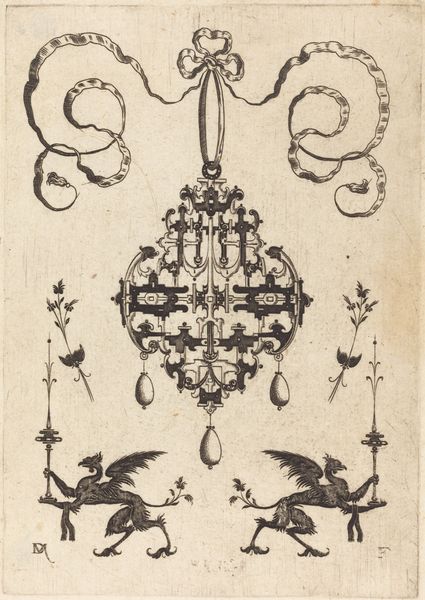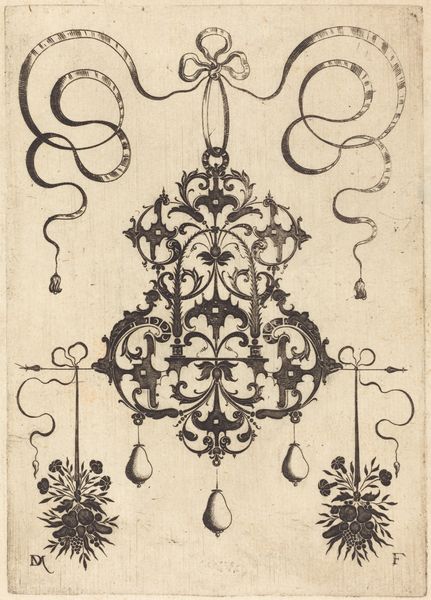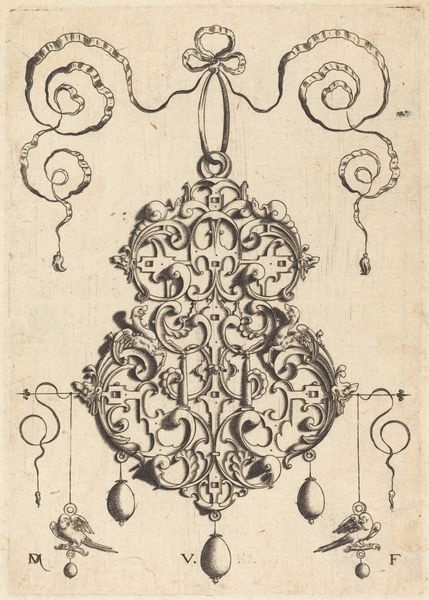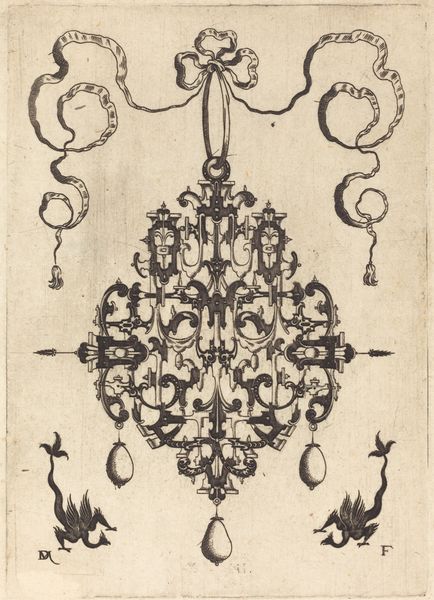
Two Brooches with Dragon and Insects at Top and Human Beings with Snake-like Tails atBottom 1596
0:00
0:00
print, engraving
#
medieval
# print
#
figuration
#
11_renaissance
#
engraving
Copyright: National Gallery of Art: CC0 1.0
Curator: Welcome. We're standing before "Two Brooches with Dragon and Insects at Top and Human Beings with Snake-like Tails at Bottom," an engraving by Daniel Mignot, dating back to 1596. Editor: The immediate impression is one of intricate fantasy, wouldn't you agree? There is a certain dreamlike quality to this collection of creatures, each with meticulously etched detail. Curator: Absolutely. Let’s start by unpacking the formal composition. Note the arrangement; two brooch designs are positioned, one seemingly an extension of the other, segmented into distinct motifs. We have, at the apex, dragons and insects; at the base, those figures you mentioned. Editor: What I find fascinating is the evident skill. Consider the laborious craft of engraving, the physical pressure required to carve these motifs into the metal. Mignot wasn't just creating an image; he was undertaking repetitive movements, each scratch leaving its mark. This adds an element of tangible labor to the composition. What would these brooches be used for, or even made from, and were these merely designs of unattainable items? Curator: Excellent point. The function of such designs is compelling; it is pure visual representation. Consider how the dragon, as a figure, often represents power, virility, and the dangers one faces on such journeys. The human figures below are also quite intriguing because of their snake-like tails, perhaps evoking the sense of the fall of humankind. Mignot may be suggesting the power or control, inherent with these qualities as a way for humanity to reclaim the control the original humans lost. Editor: The material realities could provide greater contextualization. The paper would dictate the potential buyer or commissioner and ultimately determine the artwork's destination and how people view its meaning. Curator: The very act of production becomes a part of its signification, then. Fascinating how it shifts the lens. Editor: Exactly. When we bring in the reality of that paper, that engraving, that design to wear. That completely reshapes how we interpret what at first glance seemed fantastical, a dreamscape as a comment about societal and class desires of a time. Curator: An interplay, then, between representation and creation, vision and purpose, the artwork’s structure itself. Editor: And how the realities of labor intertwine with our very perceptions and ideas of societal issues during the Renaissance period, ultimately informing the way we understand their lives and social systems.
Comments
No comments
Be the first to comment and join the conversation on the ultimate creative platform.
